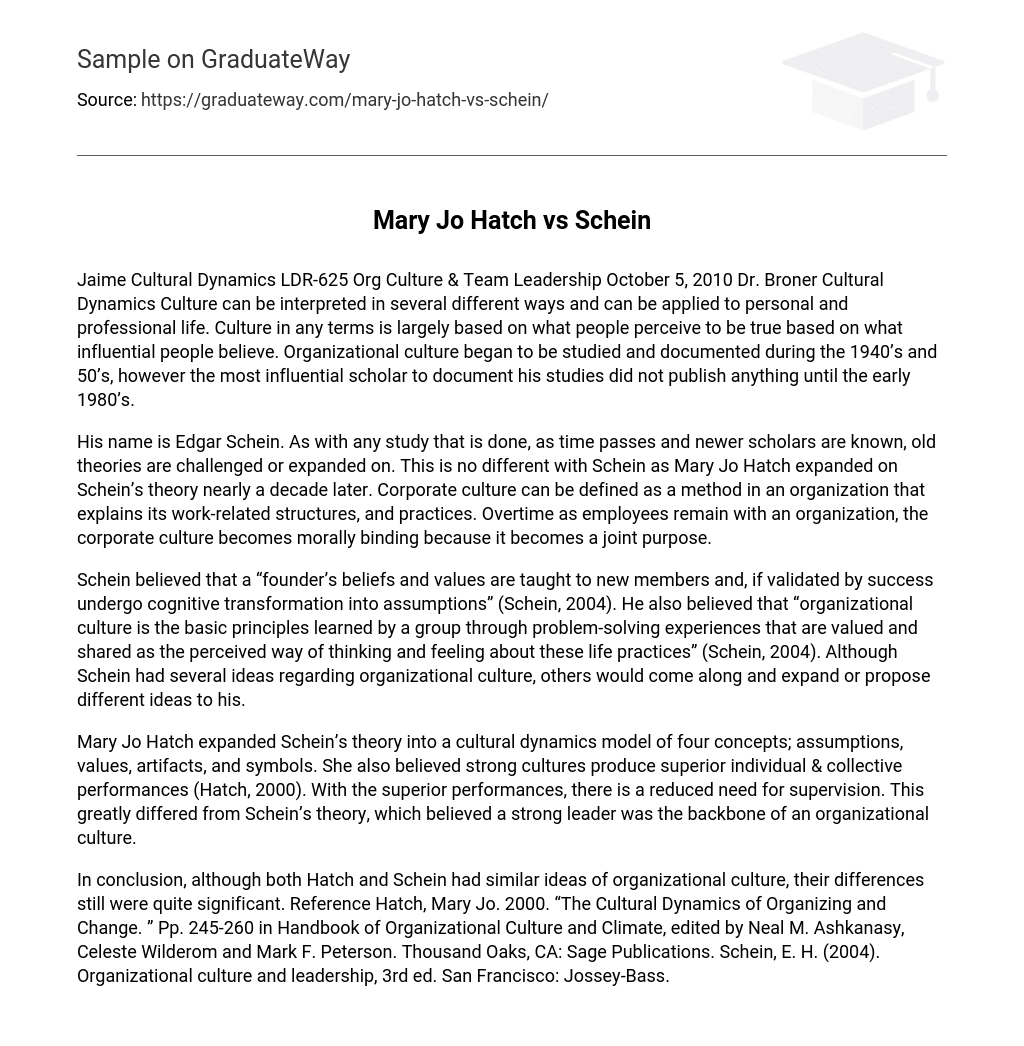Culture can be interpreted in several different ways and can be applied to personal and professional life. Culture in any terms is largely based on what people perceive to be true based on what influential people believe. Organizational culture began to be studied and documented during the 1940’s and 50’s, however the most influential scholar to document his studies did not publish anything until the early 1980’s.
His name is Edgar Schein. As with any study that is done, as time passes and newer scholars are known, old theories are challenged or expanded on. This is no different with Schein as Mary Jo Hatch expanded on Schein’s theory nearly a decade later. Corporate culture can be defined as a method in an organization that explains its work-related structures, and practices. Overtime as employees remain with an organization, the corporate culture becomes morally binding because it becomes a joint purpose.
Schein believed that a “founder’s beliefs and values are taught to new members and, if validated by success undergo cognitive transformation into assumptions” (Schein, 2004). He also believed that “organizational culture is the basic principles learned by a group through problem-solving experiences that are valued and shared as the perceived way of thinking and feeling about these life practices” (Schein, 2004). Although Schein had several ideas regarding organizational culture, others would come along and expand or propose different ideas to his.
Mary Jo Hatch expanded Schein’s theory into a cultural dynamics model of four concepts; assumptions, values, artifacts, and symbols. She also believed strong cultures produce superior individual & collective performances (Hatch, 2000). With the superior performances, there is a reduced need for supervision. This greatly differed from Schein’s theory, which believed a strong leader was the backbone of an organizational culture. In conclusion, although both Hatch and Schein had similar ideas of organizational culture, their differences still were quite significant.
Reference
- Hatch, Mary Jo. 2000. “The Cultural Dynamics of Organizing and Change. ” Pp. 245-260
- Handbook of Organizational Culture and Climate, edited by Neal M. Ashkanasy, Celeste Wilderom and Mark F. Peterson. Thousand Oaks, CA: Sage Publications. Schein, E. H. (2004). Organizational culture and leadership, 3rd ed. San Francisco: Jossey-Bass.





